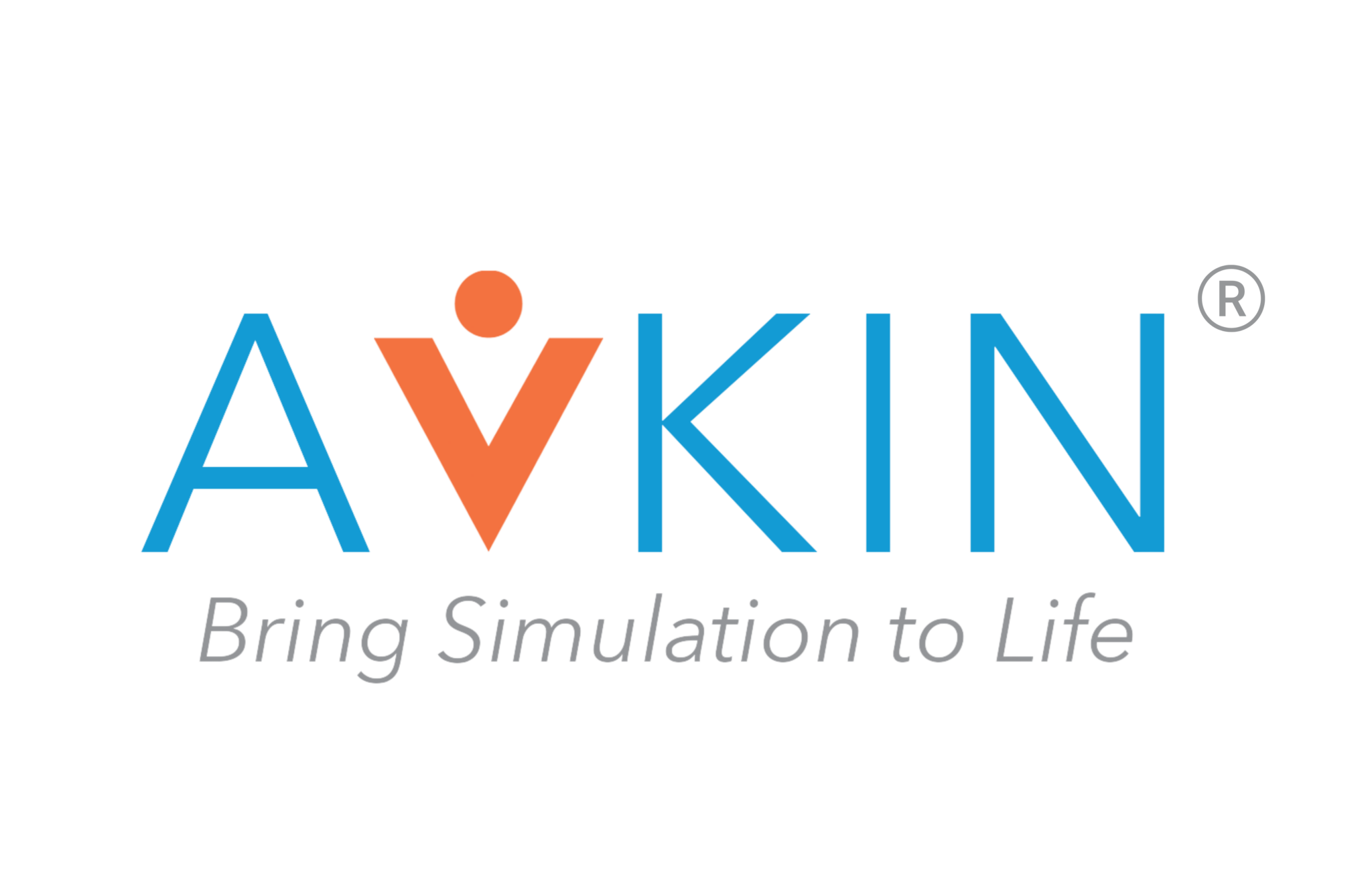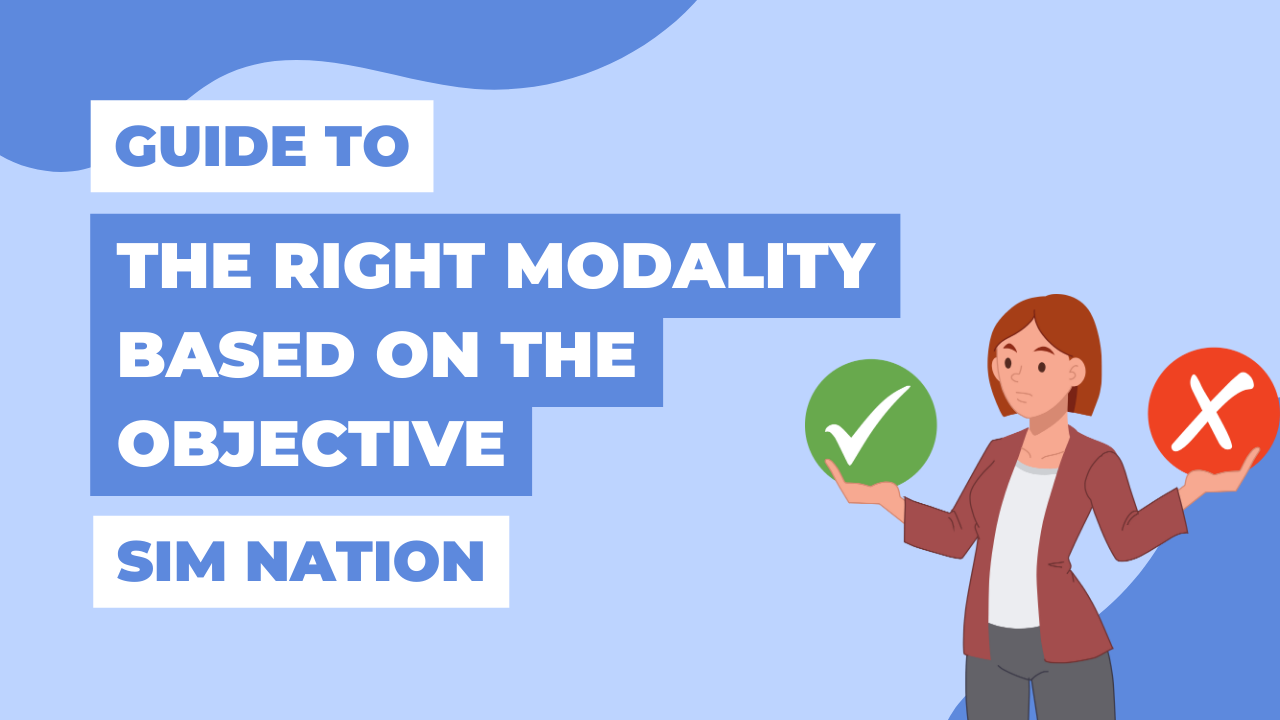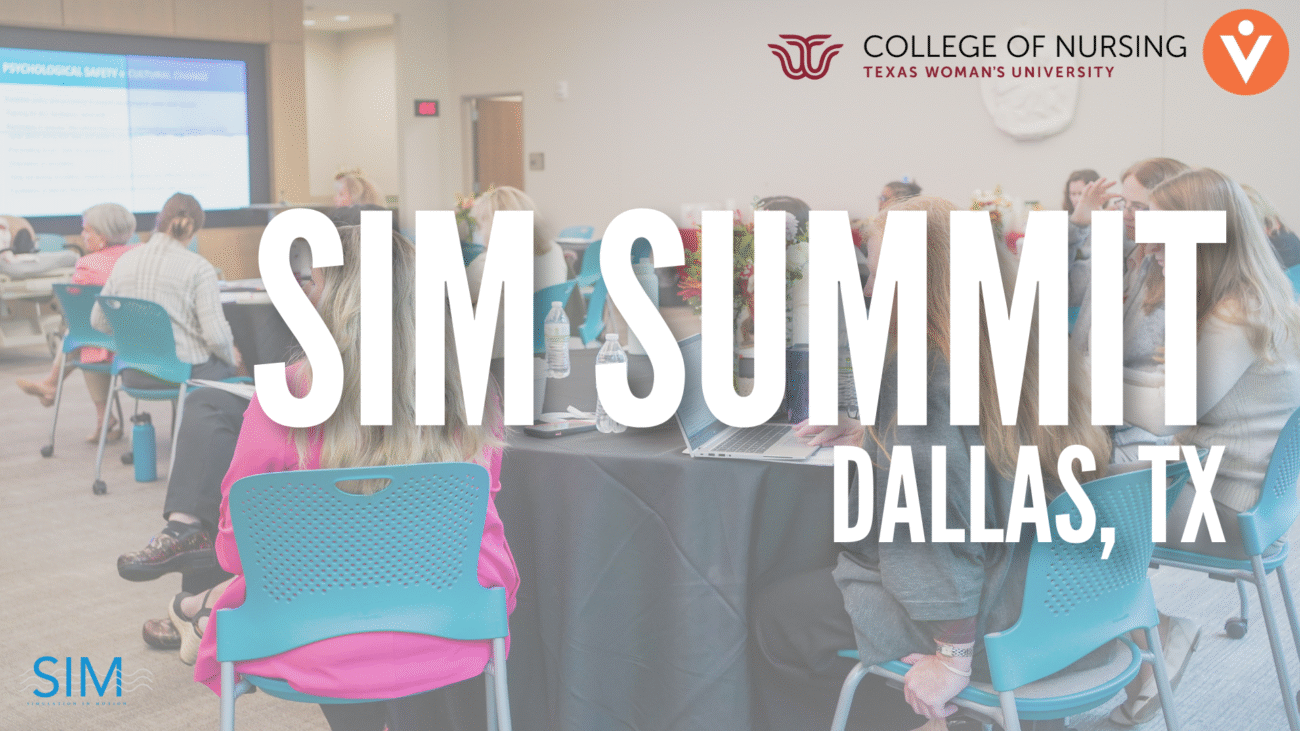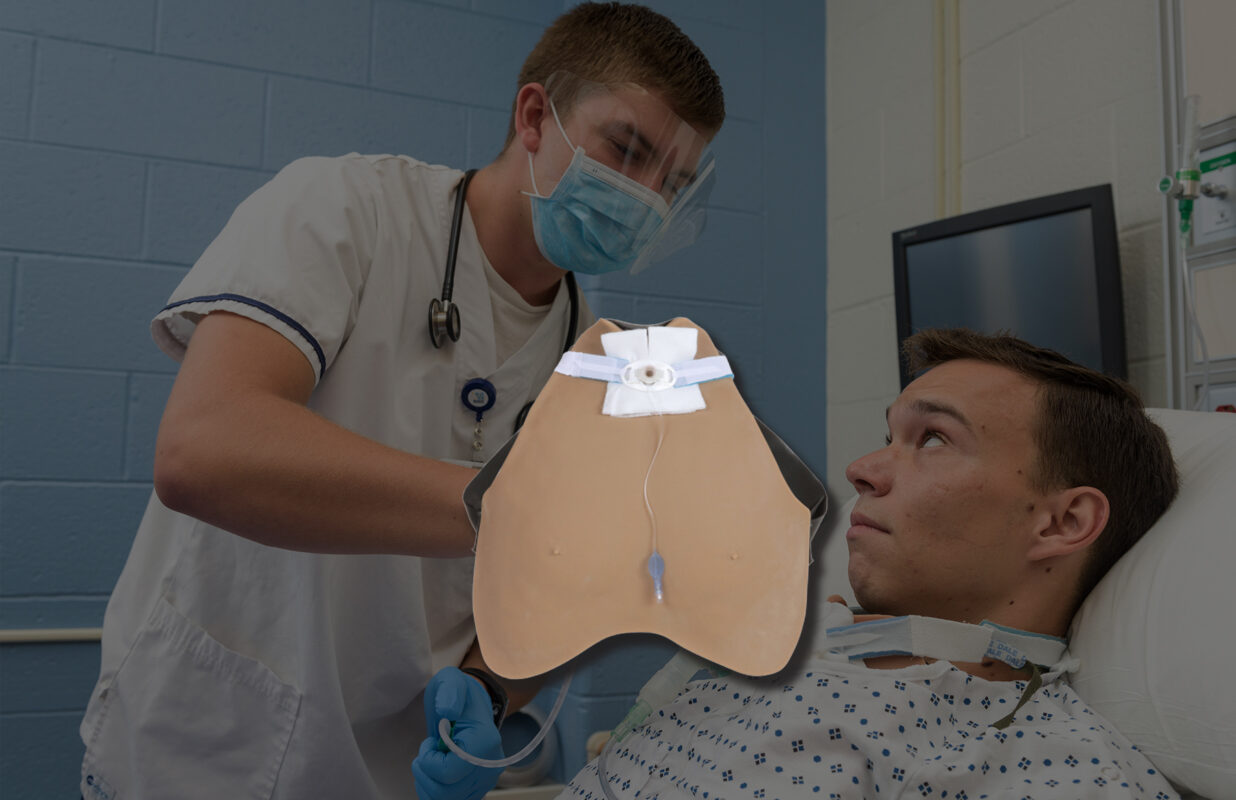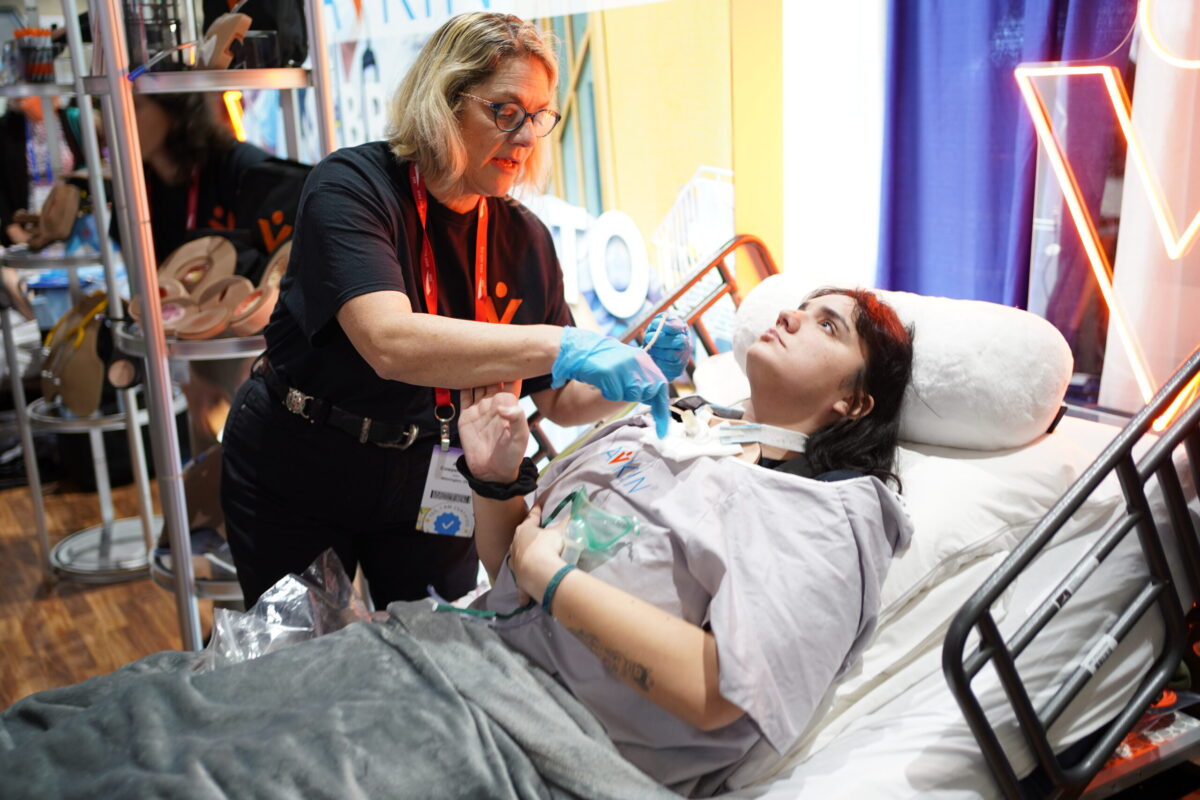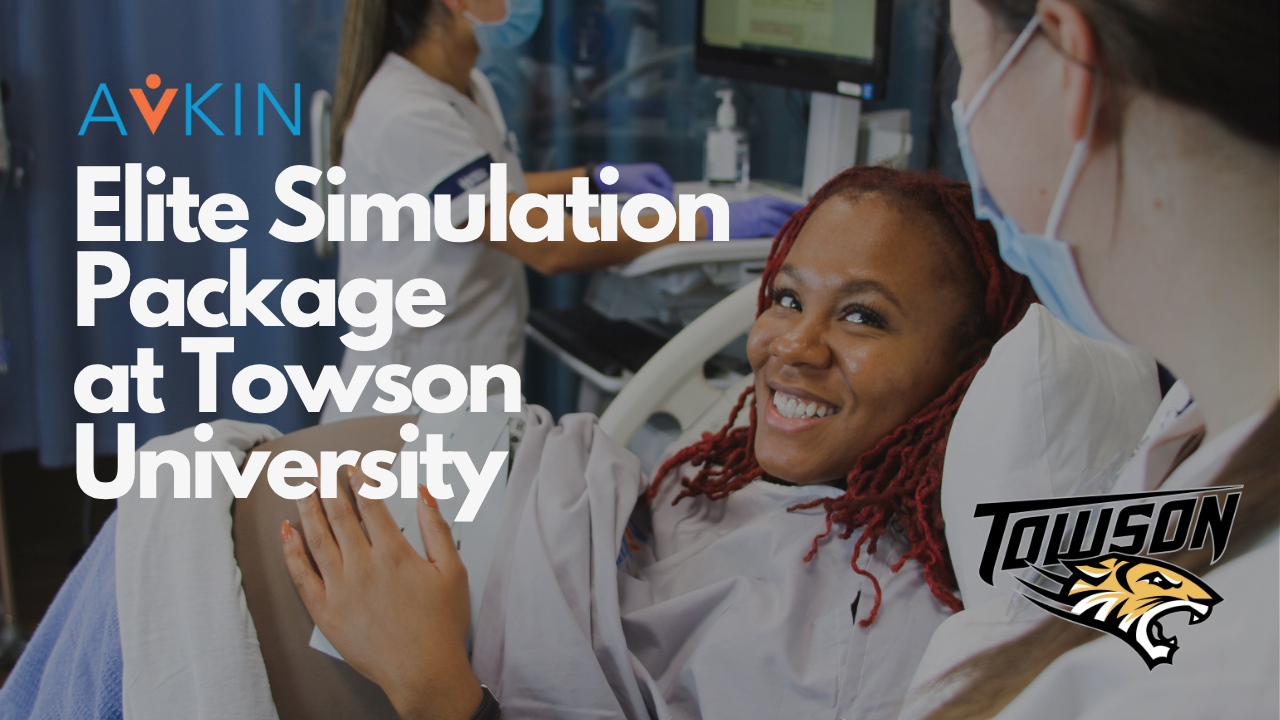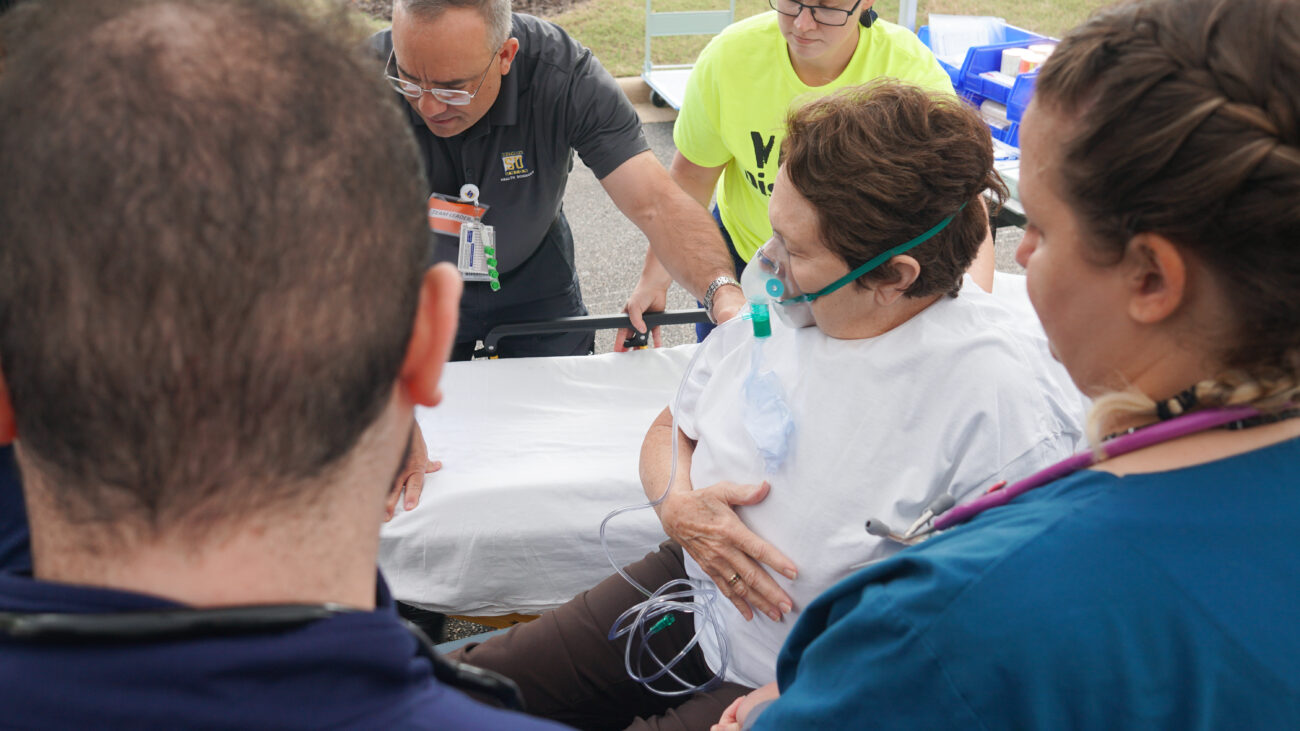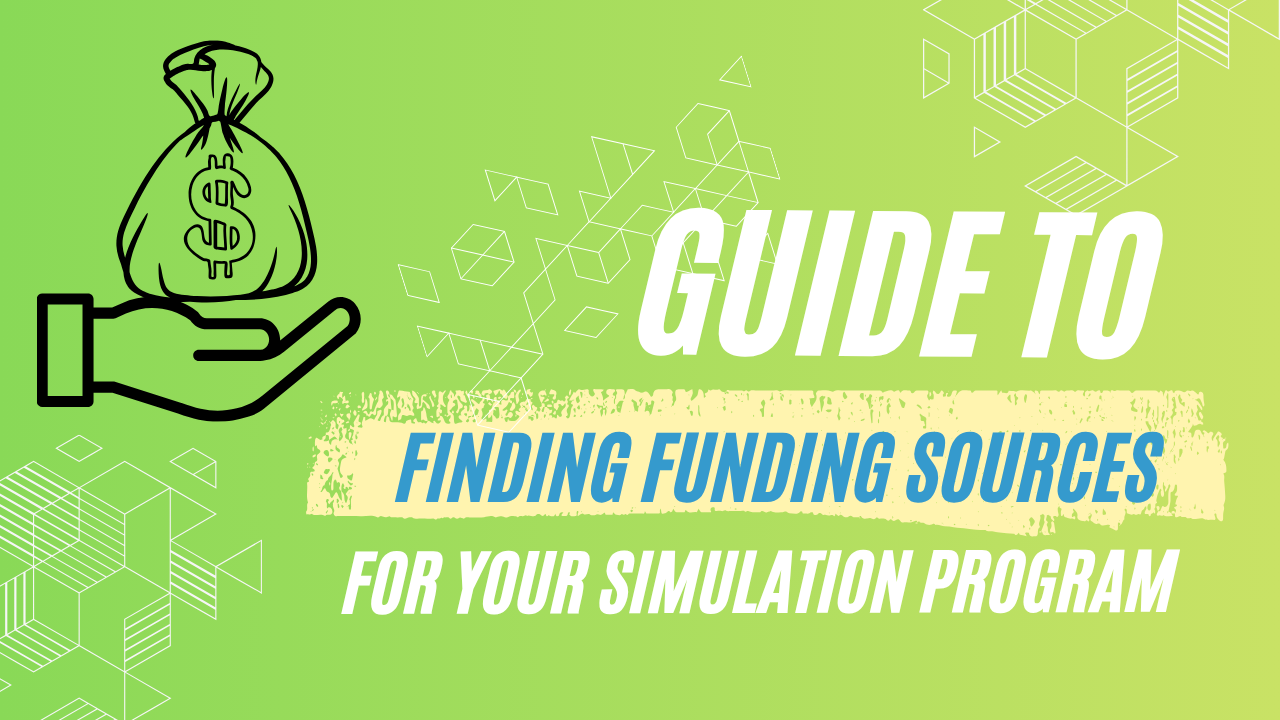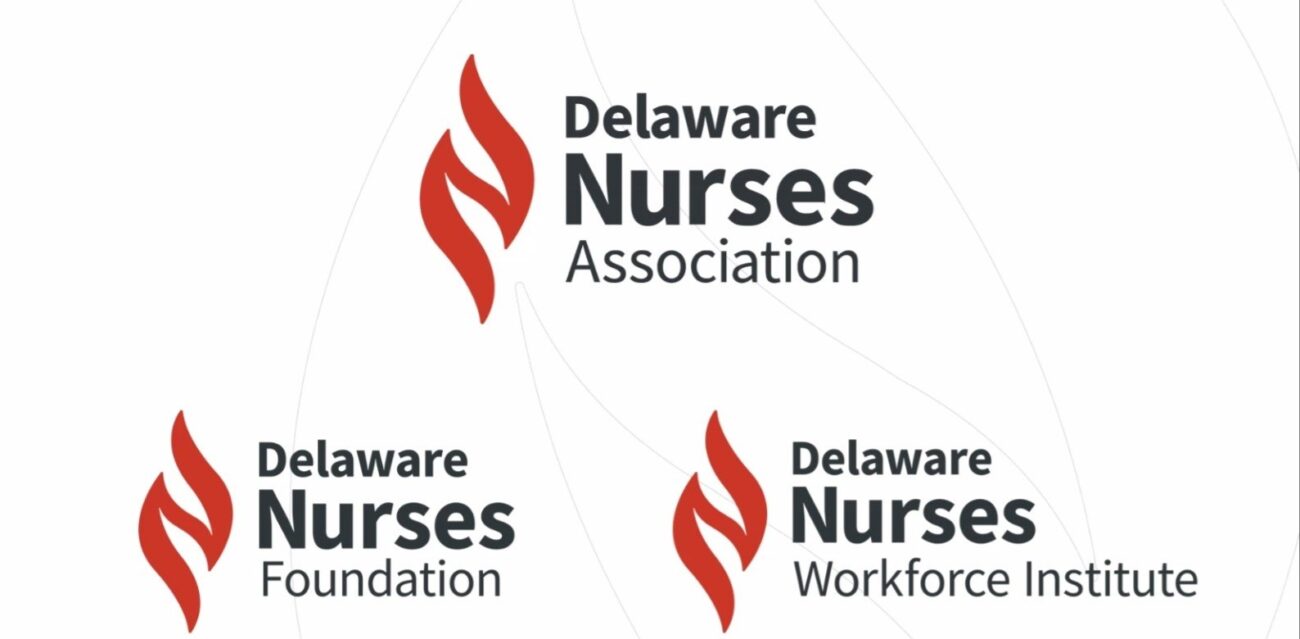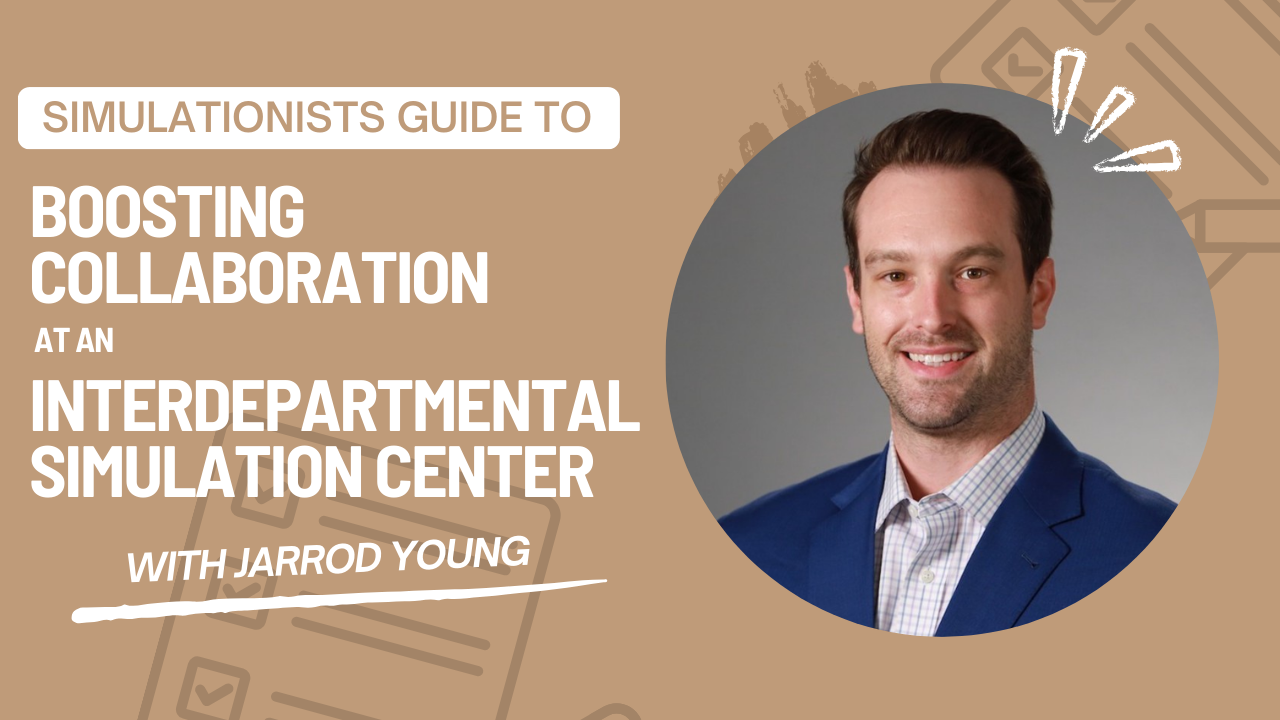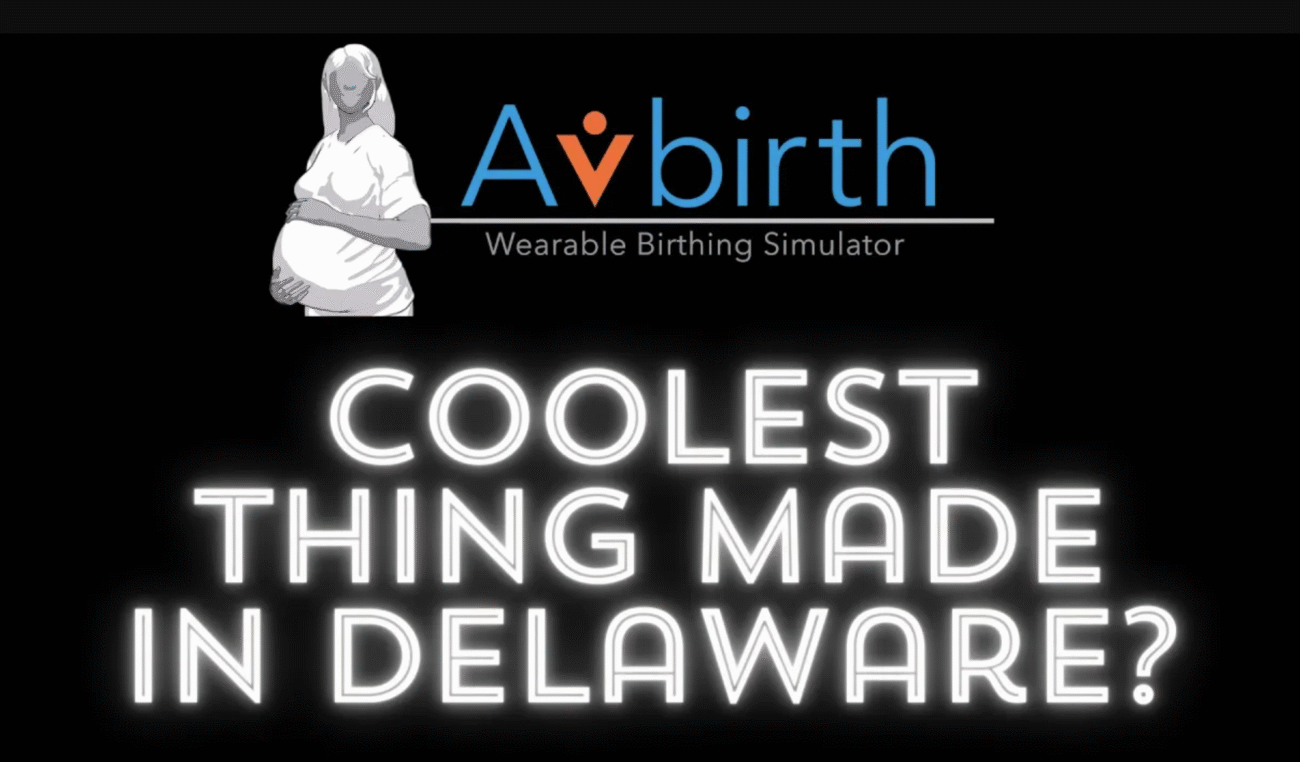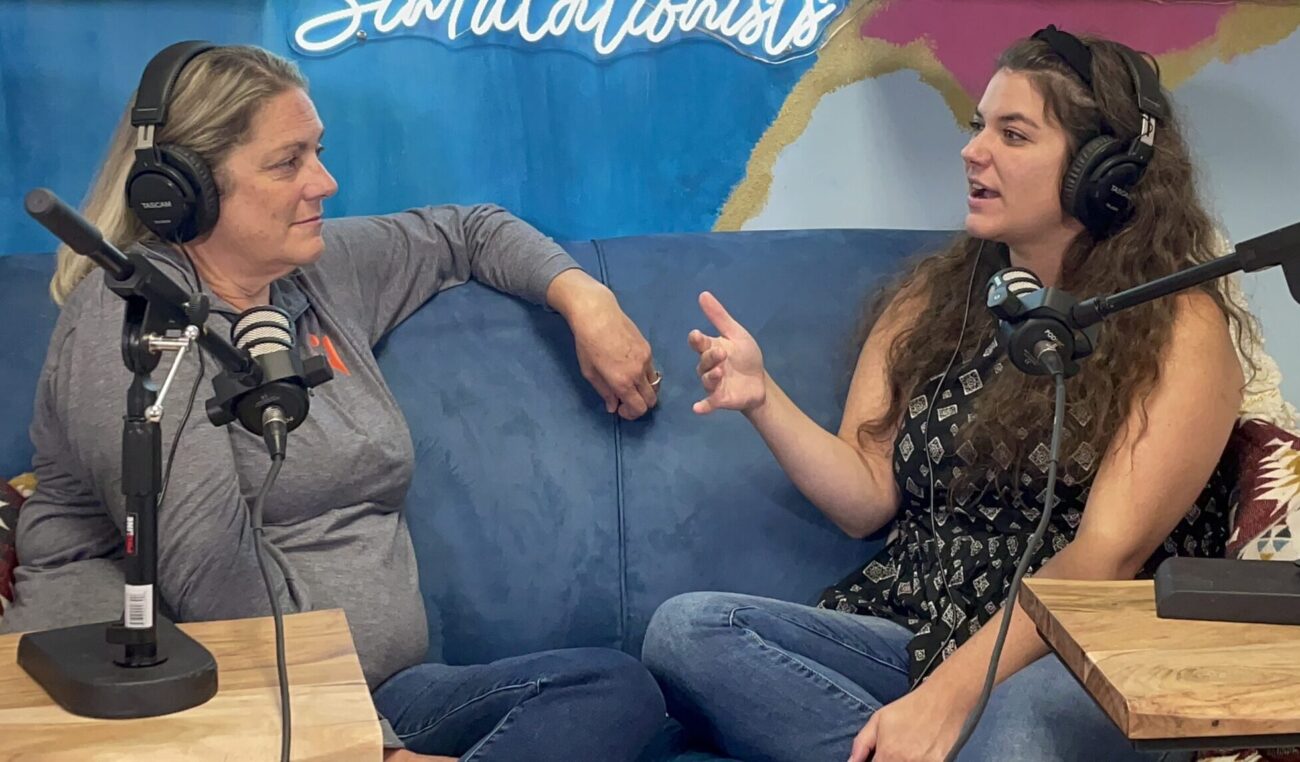Simulationists Guide To The Standards of Best Practice

The journey toward establishing simulation standards of best practice in nursing education is a testament to the dedication and collaborative spirit of the healthcare simulation community. This transformative work began in 2009 and unfolded over three years, marking a significant milestone in the simulation field. element
Teresa Gore PhD, DNP, APRN, FNP-BC, CHSE-A, FSSH, FAAN from HealthySimulation.com discusses the development of simulation standards of best practice in nursing education. The standards cover various aspects of simulation, including terminology, participant objectives, facilitation methods, debriefing, and evaluation. The standards have been adopted and supported by numerous organizations worldwide. The conversation explores the impact of the standards of best practice in simulation on the simulation community.
Revolutionizing Nursing Education with Simulation Standards of Best Practice
Crafting the Foundation
The development of these standards was not just about setting guidelines but also about creating a comprehensive framework that included terminology, participant objectives, facilitation methods, debriefing, and evaluation. These components ensured that the simulation experiences were not only educational but also consistent in quality and effectiveness across different learning environments.
The Impact of Standards
Upon their publication, the simulation standards made an indelible impact on the field. They served as a crucial guide for educators and researchers, establishing simulation as a reputable and research-based practice. With the support of numerous organizations worldwide, these standards have become a benchmark, leveling the playing field for simulationists everywhere.
The Role of Mentorship and Community
In the early days of simulation, the lack of established guidelines made mentorship and peer validation incredibly valuable. “When you are a simulationist in the early times, we didn’t have anybody to mentor us or even anyone to guide us within our own institutions,” one pioneer in the field recalled. The community’s generosity in sharing knowledge and collaborating played a crucial role in shaping the standards.
Continuous Evolution
The field of simulation is ever-evolving, necessitating continuous improvement and adaptation of the standards. Engaging with these standards and providing feedback is vital, ensuring they meet the community’s needs and stay relevant.
Personal Reflections from the Front Lines
The narratives shared by early adopters and developers of these standards reflect a mix of challenges and triumphs. “We kept hearing war stories. The war stories were getting us,” shared one contributor, highlighting the real-world problems that drove the development of the standards. Another noted the significance of validation by major studies, “We knew that it was going to happen when we got, when the NCSBN study and in 2014, you know, when Hayden et al, published that and said, follow the standards. That’s when we knew that that was one of those.”
The establishment of simulation standards of best practice in nursing education is more than a set of guidelines—it is a movement toward excellence and consistency in healthcare education. As these standards continue to evolve, they promise to guide new generations of educators and practitioners, ensuring that the legacy of quality and collaboration continues to thrive in the simulation community.
A podcast for Simulationists by Simulationists hosted by Amy Cowperthwait CEO, RN, MSN, CNS, CHSE-A and Megan Weldon, CHSE.
Simulation Nation is here to make simulation as simple as possible. We know the headaches that you are seeing in your simulation center and we want to help alleviate problems by giving you guides on simulation writing, moulage, standardized patients, new technology and more!
If you enjoyed our guide to Standards of Best Practice, check out more episodes of Simulation Nation below, and subscribe to our podcast and Youtube so you never miss an episode!
Full Transcript
So thank you so much for agreeing to join us and share what happened with these standards of best practice.
Teresa Gore (00:46.093)
I’m so excited to be here today because I love talking about simulation and standards and how it all started and I have been blessed in that in my career.
Amy Cowperthwait (00:55.108)
Yeah, and there are very few of us that just geek out when we start talking about this stuff. And I have to say, if I thought about geeking out about standards of best practice when I was first graduating as a nurse, that wouldn’t have been my story. But I am so glad, so, so glad that my path took me where it did, for sure.
Teresa Gore (00:58.093)
Oh yeah. Yeah. Well, we were there.
Teresa Gore (01:11.693)
And we all were there in the beginning and so it made sense to us why we needed this. And yeah, so it was very obvious back in the beginning when we were just doing those baby steps.
Amy Cowperthwait (01:17.412)
Mm -hmm.
Amy Cowperthwait (01:25.06)
Absolutely. So before we get jumping into the standards of best practice, tell us a little bit. I know I’ve heard your story, but I want everyone to hear your story about how you got started in simulation.
Teresa Gore (01:34.637)
So it is one of those weird things is that I went from practice into academia and I wasn’t happy with the way students were coming out because they could pass tests, they could do things like that, but they couldn’t do the skills. So my very first experience was teaching health assessment to undergrad and I changed their final exam to a hands -on. So they had a little bit of a test and so they had static mannequins, but they had to do like a shift assessment because that’s what you’re going to be doing.
Amy Cowperthwait (01:55.524)
Oh boy.
Teresa Gore (02:03.117)
And then I went to my second job and we were standing there and the dean goes, hey, look, somebody’s donated these mannequins, the Sillman, who wants to take this over? And I was like, I’ll do it. And that’s how it all started. And then I was like, well, if I’m going to do this, I want to do it the best that I can. So I found out about Anaxel and I was like, well, I need to go to that conference. And so I did and ran for an office and got it. And here I am.
Amy Cowperthwait (02:15.524)
Ha ha!
Amy Cowperthwait (02:22.628)
Yeah.
Teresa Gore (02:31.021)
You know, it just, the series of events that happened that just clearly showed I was on that path and this became really my passion.
Amy Cowperthwait (02:31.364)
Uh?
Amy Cowperthwait (02:40.74)
Yeah. And so when you joined in Axel, was it International Nursing Association for Clinical Skills and Learning? Because that was me. So it changed. Yeah.
Teresa Gore (02:46.829)
It’s clinical. Okay. No, I was a little later. It was, I was, because we were having our conference, but we weren’t, because I think I joined in 2007. My first conference was 2008. But that was when we had started having our conference where it wasn’t the clinical skills conference. It was the Anaxel conference. Yes.
Amy Cowperthwait (02:58.468)
Okay.
Amy Cowperthwait (03:08.004)
Right. So you came right as it changed because I started in 2006 and I joined as clinical skills, but very quickly it changed to simulation. And I was really happy because it felt like there was an association that was there to help me, you know, because we were all trying to figure it out at that point. Nobody really knew what they were doing. And most people were voluntold, but you volunteered. Is that? Yeah.
Teresa Gore (03:17.005)
Oh yeah.
Teresa Gore (03:20.589)
Yeah, yeah, but we were. Yeah. I volunteered. Yeah, one of us was going to be volunteered and I was the ones that was in the lab because I enjoyed doing that because that’s the way I learn. I’m a kinesthetic learner, so I have to do that. Yes.
Amy Cowperthwait (03:37.828)
Uh huh. Yep.
Me too. Yep. Absolutely. Well, that’s really exciting. So what was, as you got into the leadership at Enaxel, what was the impetus to really get things going as far as the standards of best practice?
Teresa Gore (03:55.437)
We kept hearing war stories. The war stories were getting us. The late and great Meg McCariola would tell us a story about how students were traumatized. The faculty that was teaching the lecture also had them in lab and they were doing a test and they didn’t score well on the test and they were going in like that week for having the
their simulation and it was supposed to be a formative, you know, just a simulation. They walked in the day of the simulation. She said, this is for a grade. Totally took out all psychological safety, which we didn’t understand back then, took out the trust. So when, so when you look at that, Meg was like, we’ve got to have professional integrity. And so that’s how that one got started. But what we did where we were listening to our members.
Amy Cowperthwait (04:40.132)
Sure.
Amy Cowperthwait (04:48.324)
Yeah.
Teresa Gore (04:53.805)
And so we did a three year process. We saw a gap. We knew that there was something that needed to come out because we didn’t even have the terms. Like what was facilitation? What type of facilitations can you do? You know, and I remember when they actually came out with the book about simulation and they were like partial instructor driven facilitation and instructor driven. And I ran into the lab going.
Amy Cowperthwait (05:07.876)
Mm -hmm.
Teresa Gore (05:21.709)
we’ve got a name, we’re doing it right. Because you remember what it was like is that when somebody validated what you were doing, you were so happy that, oh my God, I’ve got this, I’m doing it right. And so we did a three year process. And so the board got together and we talked to our members and said, what do you need? So we put out some surveys. First we did was we bought books that were out of publishing.
Amy Cowperthwait (05:26.02)
Mm -hmm. Oh, huge. Yes. Yes. Right. Yeah.
Teresa Gore (05:48.045)
They were, you know, they were older books, but it’s how do you write a standard? So we bought two because I had been in with another organization that was reviewing their standards in nursing. So I was like, this is the book they use. So we got that book and we started, and we started looking at how, what needs to be included. And so we went through, we developed these and our board would get together and we would go down. It sounded like fun. You’re going to go down.
because Florida was easy to get to because you didn’t have to worry the time of year. You could get here if you didn’t schedule during tornado season or hurricane season. You could get here and we would lock ourselves in a room basically from eight to five. And we worked in groups and we said, what is your passion? What do you need? So we got from our surveys from our members, what were the main things that we needed to look at for our standards? And so I was telling you, I pulled out.
Amy Cowperthwait (06:22.18)
Mm -hmm. Mm -hmm. Mm -hmm.
Amy Cowperthwait (06:31.908)
Wow.
Teresa Gore (06:46.349)
the printed first edition for 2011. So this started in 2009. We started on these standards and we would write some, we’d get together, we’d get all the research that we could. We’d start in it with me, with Wordsmith of the number of words we changed. And then we’d send it out for a peer review. So this is, it was, there was very slow process, but it was very purposeful because we wanted it to be right.
Amy Cowperthwait (06:49.092)
Aww.
Amy Cowperthwait (07:15.332)
Mm -hmm.
Teresa Gore (07:15.341)
And so everybody was vested in this and we did it as the Anaxel Board of Directors. All of us were listed. We had some lead positions, but this really showed that we wanted it to be owned by the organization. And so there is an article, it’s called Simulation Standards Development, and Ideal Inspires. And it was in our clinical simulation in nursing and it was…
Amy Cowperthwait (07:30.563)
Yeah, yeah.
Teresa Gore (07:44.141)
in 2011. So if you’re a member of an act, so go in and read that and it tells you really this process that we went through. So we went through a couple of presidents as we started this. We had presidents, president -elects, and we just kept the ball going. We didn’t let it get bogged down because we knew this was going to be a living document and that was the thing. We knew that as more research came out that we’d continue to grow this. So that was how, yeah.
Amy Cowperthwait (08:11.012)
Yeah, and I think that was a really big piece of it was that you identified where there was holes in the research or in the best practice literature. And then that really, again, spurred the next bit of research, the next piece of this. Because I remember I was working one of the standards not as early as 2009 or 2011, but I was working on one of those. And one of the things was of if there’s a gap,
Teresa Gore (08:14.157)
Yes.
Right.
Teresa Gore (08:24.205)
Yes.
Amy Cowperthwait (08:37.444)
identify it because then that gives somebody who’s working on their PhD or looking for research to do in simulation, it gives them a cause to actually do this research, which I thought was so incredibly amazing that it’s not like we’re not going to pretend like it’s all there or that we have it all together. We’re going to say, hey, we need help here. Can somebody grab this and do research on it? And I think that our simulation community really responded to that very, very well and filled in those holes, which is amazing.
Teresa Gore (08:38.605)
Yes.
Teresa Gore (08:49.869)
Oh, nope.
Teresa Gore (09:01.229)
We did. I mean, it’s like terminology. You know, we couldn’t even determine what low fidelity was, what high fidelity was. All of these terms, which then is no longer a standard, but it is part of the standards now. But now we have a dictionary that’s dedicated just to, you know, through SSH and through all the other collaborating organizations. That is the beauty of this, is that this was kind of that foundation.
Amy Cowperthwait (09:10.98)
Mm -hmm.
Teresa Gore (09:31.181)
that got things to getting built. And so our standards were terminology, professional integrity of participants, participant objectives, facilitation methods, simulation facilitator, the debriefing process, and evaluation of expected outcomes. The beauty of this is that we got all this written and then we went, we haven’t told anybody how to put it together. So then you get simulation design. And that is, that’s just.
Amy Cowperthwait (09:55.556)
Yeah.
Yeah.
Teresa Gore (09:59.149)
how, you know, organic this is, because it was very clear in the survey is a lot of interest, little interest. Those little interests became the next edition, the next revision of this. So that was, it was beautiful to see that.
Amy Cowperthwait (10:02.212)
Yep.
Amy Cowperthwait (10:12.804)
Mm -hmm. Mm -hmm. Mm -hmm. Yeah, that’s amazing. So when you were organizing these groups, was it really based off of their own particular passions? You kind of mentioned that. So you said, here’s the options that we can see right now. Which one would you choose? And you just kind of broke that up into groups. And I know at that point, you took a dive into the literature. We’re trying to make sure that the terminology was at least somewhat the same. I know.
Teresa Gore (10:24.653)
Yes.
Amy Cowperthwait (10:40.228)
with standardized patients, we really struggle with the lexicon of that because research, it’s called different things across the world. Standardized patients evokes a certain emotion, especially for medical students who have that high stakes testing, and it doesn’t always have to be that way. And so we really struggle with that. And that was an article that I worked on with Jill Senko and a few others of like, hey, let’s always tag simulated.
Teresa Gore (10:44.365)
Oh yes.
Teresa Gore (10:56.685)
Yes.
Amy Cowperthwait (11:08.516)
participants, simulated patients, and standardized patients in the keywords so that it’s coming up. And I think in simulation, we’ve had to do the same. It’s a bit better. It’s a bit easier now because simulation is usually in the terminology. But it is something that you had to work on pretty early on, I’m sure.
Teresa Gore (11:12.493)
And the same thing, yes.
Teresa Gore (11:25.389)
Oh yeah, and that was one of the things. And then we would look and say, what do you want to do your deep dive in? And so all of us were, that we started, we’re on the board of directors. So being on the board of directors, we would sit there and go, where are we? Where do we want to go? But everything was guided by our membership. And so that was the thing. And then people who weren’t on our board, who were simulation experts.
Amy Cowperthwait (11:45.06)
Mm -hmm.
Teresa Gore (11:51.885)
We said, would you review this? We got other organizations to review too. So that is, yeah, that is the beauty is that you can’t just have the name nursing as we now know they’re the healthcare simulation standards, not just the ANAXA standards, because that limits some people’s perception of the standards. And so it has just been this growing process that I’ve loved to see the organization continue to expand and grow.
Amy Cowperthwait (11:56.036)
Wow, that’s really cool.
Amy Cowperthwait (12:05.892)
Mm -hmm.
Amy Cowperthwait (12:11.94)
Yes.
Amy Cowperthwait (12:20.132)
Yeah, that’s amazing. So when you initially received those, you held up your very first copy, which actually made me tear up a little bit. I remember having that copy years and years ago. Yep. Yep.
Teresa Gore (12:27.213)
No, it was mailed. Do you remember? It was actually mailed because we had a sponsor. We had one of, it was CAE actually paid to have these printed and sent out. And they were mailed. So if you were a member of an axle, that was actually mailed and it was their own special edition. Yeah.
Amy Cowperthwait (12:42.532)
Wow.
Amy Cowperthwait (12:50.756)
Yep, yep. Mine was war torn because I really dug through those just trying to understand it. And as you said, it was very validating, you know, that we were doing some other. Now there were some things I had to change for sure, but it was very validating that we were on the right track for sure.
Teresa Gore (12:55.565)
Yes.
Yes, it was. Oh, definitely. I –
Teresa Gore (13:07.405)
Yeah, and just to have that and you some things that we were organically doing just because it was our gut instinct as as educators, but we didn’t know if it was right. And then some things you went, oh, I hadn’t considered that. I now see a different perspective of it and seeing that perspective. Then you go, I have to change my practice. Yeah.
Amy Cowperthwait (13:30.212)
Well, it also justified because we didn’t have a control room. And I remember going to our leadership saying, I need a control room and here’s why. And I never thought of putting myself into a different room until they came out. And I was like, all of a sudden, like, oh, this makes so much, because they would always do something and then look at me, just to look at my nonverbal responses. Yeah. Or they, you know.
Teresa Gore (13:34.445)
We didn’t either.
Teresa Gore (13:45.215)
Right.
Teresa Gore (13:49.773)
They would be here. Yeah, yeah, you’d be doing this and I was said and they just freeze. Yeah
Amy Cowperthwait (13:56.036)
you would be like, you just tried to hold your facial expressions, but you really wanted to jump in and help. And obviously that’s not what simulation was about, but it was definitely a much better move once we were able to justify the investment of a control room, because then we were able to point to those standards and say, look, this is something that we need. And it made all the difference. And I think even when we go up for accreditation, you’re nervous.
Teresa Gore (14:00.301)
Yes.
Teresa Gore (14:09.325)
Yeah.
Teresa Gore (14:14.061)
Oh yeah.
Teresa Gore (14:25.229)
Oh yeah.
Amy Cowperthwait (14:26.052)
But they put your mind at ease so easily to say, we’re here to help you, to advocate. What are the things that you need? Help us, like, what are the things that you need us to advocate for? And I think that’s really how the standards helped in many ways, right? It pointed to standards of best care and, you know, the beginnings of policies and procedures and things along those lines. But it really allowed us to go to our leadership and say, hey, we need simulation faculty. We need, you know, more of this or whatever it was for sure.
Teresa Gore (14:36.749)
Oh yes.
Teresa Gore (14:52.205)
Well, oh yeah, instead of having faculty go, you’re not really teaching anything, you’re just in there playing with dolls. I remember being told that. And then you could bring the science to them and, you know, through the use of the standards and, you know, you have the standards, the certifications, all of this continues to build. You can then have a career path. And we didn’t always have that option as having a career path.
in the early, you know, the olden days, we didn’t have that option to where, you know, oh, you want to get promoted. Well, you’ve got to have a specialty and simulation wasn’t seen as that specialty. Now it is. And so that is where this comes in. You know, now that we have professional development, how do you stay? You know, one of the best things that ever happened with the standards was the NCSBN National Simulation Multisite Study.
Amy Cowperthwait (15:33.668)
Mm -hmm.
Amy Cowperthwait (15:51.523)
Mm -hmm.
Teresa Gore (15:51.661)
And they base things on the ANAXA standards. And then they had a checklist. And that checklist says, you’ve got to be trained to do this. And you’ve got to follow the standards. And so that is when you see those things come out. That’s when you go, I did impact. It is like, I had a small impact. And all of us did. If you used the standards, read the standards, edited the standards.
Amy Cowperthwait (16:00.452)
Right? Right.
Amy Cowperthwait (16:09.924)
Mm -hmm.
Teresa Gore (16:18.733)
made suggestions, took the surveys to guide. Everybody had an impact and still will have an impact as you look at where the gaps are that help keep changing, adapting, and growing these standards. And so when somebody, you know, at the end of your career, when you go, well, did you change practice? What did you give back to our profession? You can say you’ve changed practice of educating.
and all of these people that you’ll never meet. And that, oh yeah, and, oh yeah. Yeah.
Amy Cowperthwait (16:50.724)
Oh, it’s huge, Teresa. It’s the shot heard around the simulation world, honestly. I mean, it’s not necessarily everywhere adopted, but it is one of those things of like, but you have to have standards and those standards have got to be followed. And that it’s the guidebook, right? And you know, the fact that ASPE and SSH have, you know, joined in Axel in all of this. To me, it just points to the fact that these are, you know, whenever you decorate your house, you want it to be timeless.
Teresa Gore (17:02.157)
Yes.
Teresa Gore (17:05.837)
It is.
Teresa Gore (17:14.157)
Yeah.
Amy Cowperthwait (17:20.644)
These are timeless. It doesn’t mean that they’re not living documents, as you said, you still have to update them. You know, as we got more knowledge about different things, you know, we’re still adding to the body of literature, but it is one of those things where we have really created that reputation that we are following standards of best practice. And, you know, I’ve heard Susie and even Kim Leaton challenge like, so where are the standards of best practice for clinical education? Where are those standards? What…
Teresa Gore (17:25.645)
Oh yes.
Teresa Gore (17:46.349)
Uh.
Amy Cowperthwait (17:48.772)
You know, that’s been around longer and why don’t we have those standards? And again, not to say that clinical education isn’t important, and I don’t think either one of us are here to say that, but it is one of the things that we have really set ourselves and you guys very early on have really set us in a path and set us up for success that we are a reputable research, reputable portion of education that is research based. And I think that’s so important and so valuable. So when you put these, go ahead.
Teresa Gore (17:56.621)
No, no.
Teresa Gore (18:15.373)
We’ve always done it this way. We’ve always done it. Clinical simulation, how do you know it works? Well, we’ve always done it that way. What’s the evidence? You know, and so that’s great.
Amy Cowperthwait (18:27.3)
Right? Yeah. Yeah. When I became a clinical educator, so I was a simulationist first, but I went and did clinical education this summer just to see, because I, you know, I went to see what they were learning in simulation and all of them. And I’m like, okay, so where’s my information? How do I do this? And they’re like, just take them into clinical. And I’m like, is there, like, do we have?
Is there any, you know, and I really had to figure it out and and it took some time, you know, I mean again I integrated a lot of what I did in simulation into my post conference and things like that But I I do think that there’s there’s something to be said for making sure that we have a good body of literature to support the work that we’re doing in education in all aspects You know for sure Yeah
Teresa Gore (18:49.229)
Yeah.
Teresa Gore (19:07.597)
It is and you know that that like you said is you go into it and you find somebody good in the hospital That’s a good bedside nurse and you say you’re a good bedside nurse So I’m gonna put you in leadership or you’re a good bedside nurse So I’m gonna have you be a clinical instructor You may be great at being a bedside nurse But not able to teach and not able to guide and inspire and so that is that is the beauty of this is having this
and then learning it in simulation and taking it to clinical practice.
Amy Cowperthwait (19:39.524)
Absolutely, absolutely. So when you put these out for the first time and you say even to, as you said, send it to other associations, what was the initial feedback? What was the initial response that you got from the simulation community?
Teresa Gore (19:51.789)
Some people were not as happy as others because they weren’t the ones developing it. And so that is, but they saw the value, but we all had to come together. They appreciated them. You know, once we all get past the emotion of not owning it, right? And have to go through that. Everybody saw the value. And so now,
I think our first ones, when we sent them out, people started using them, you know, wound up with 21 organizations adopting or at least supporting them, not necessarily going, you know, we’ve adopted these. But it was, it was kind of like a fire. It’s a brush fire that starts small and continues to grow because now you have the international, you have organizations in Europe who’ve developed their standards.
Amy Cowperthwait (20:43.044)
Mm -hmm.
Teresa Gore (20:49.005)
And you have all these other organizations then are looking at taking this and saying, yes, this is it. Do we need to adjust these just in turn and wording and things like that? But none of them clash. And that’s how you know it’s right. It’s when one standard doesn’t go up against and oppose another standard. And so I think that is one of the best things.
Amy Cowperthwait (20:49.124)
Mm -hmm.
Amy Cowperthwait (20:59.972)
Right. Right. Right.
Exactly.
Teresa Gore (21:17.037)
that came about from that. But…
Amy Cowperthwait (21:19.748)
Yeah, and one thing I have to say that I don’t, I mean, I’m sure you appreciate this because you were there fairly early, but when you are a simulationist in the early times, we didn’t have anybody to mentor us or even anyone to guide us within our own institutions. And so the only way, the only measuring sticks that we had were each other.
Teresa Gore (21:32.365)
No.
Teresa Gore (21:42.861)
Yes.
Amy Cowperthwait (21:43.332)
And we weren’t in the same institutions typically. We were all over the place. And so giving us these standards of best practice really allowed us to kind of measure ourselves against what these standards were and to have some type of assurance that we were doing it right. Because everybody was trying to do the right thing. I don’t think anybody goes into it saying, let me just get through this. Especially early on, it was like, yeah, let’s make sure we’re doing a good job on this.
Teresa Gore (22:03.789)
Oh yes.
Amy Cowperthwait (22:12.772)
But it is something that it really helped to kind of level the playing field when we didn’t have a way to measure ourselves against any other faculty or against any other type of methodology that was being used as far as education in our academic settings. So for me that was really important, you know.
Teresa Gore (22:23.405)
and
Teresa Gore (22:27.181)
We didn’t even know about the basic assumption. If you’re going, you know, all of us woke up that day going, I’m intelligent, I’m smart, and I’m going to do the best job I can do today. We were all doing that every day. I remember I had to bring, I talked to the dean and said, you know, I built this from my very myopic perspective. And I’m like, I don’t even know if I’m doing it right. So I paid Kim Layton.
Amy Cowperthwait (22:39.268)
Right. Yes.
Teresa Gore (22:56.909)
to come in in 2010 and evaluate my program and give me feedback. Where are my gaps? Because we get so close, we can’t see it. We don’t know because that’s all we did know. We didn’t have all these books. We didn’t have the standards. And I think that was one of those beauties is when these came out is that I just walked around, I just bought a bunch of them. And if I talk to somebody they didn’t know that I handed them standards, you need this for your practice. And that…
Amy Cowperthwait (23:06.34)
Hmm.
Amy Cowperthwait (23:24.996)
Mm -hmm.
Teresa Gore (23:25.837)
you know, is it really helped define my career.
Amy Cowperthwait (23:30.564)
Yeah, and the funny thing behind having someone come in, so, you know, we were kind of, I worked alongside a maternal child instructor who, she was a clinical instructor, she was a didactic instructor, but she did adopt simulation and took to it, but didn’t necessarily follow the standard of best practice, wasn’t really a part of an axle, and she and I sometimes didn’t always agree on, you know, the educational practices and simulation, and so they called Val Howard.
and asked her to come in and do consulting. And I was like, bring her on, bring her in, I’m ready. And when she came, I showed her all of my evaluation data, all of the simulations that we were doing, because I was adult health specific. And she said, why did they call me in here? I don’t know why they called me. And I said, well, they don’t know whether we’re doing good simulation. They don’t have a way to measure that. And so that was really exciting, again, very validating to have Val come in and, you know,
Teresa Gore (23:57.389)
Yeah. Mm -hmm. Come on. Yeah.
Teresa Gore (24:07.949)
Yeah.
Teresa Gore (24:18.669)
We’re done.
Teresa Gore (24:24.397)
Oh yes.
Amy Cowperthwait (24:26.468)
support us with the need for a SimTech and some other basic educational practices that were gonna make sure that the students were supported throughout the curriculum in the simulation arena. So it was really fun to have that happen as well. So we’ve talked a little bit about this, but did you ever think about the fact that the standards of best practice were gonna be the shot that was heard around the simulation world?
Teresa Gore (24:52.173)
You know, we went in hoping that we’d have an impact, but I don’t think any of us realized if it would happen, you know, and we all wanted it to, and it’s just continued to take on its own life. And I’m so, I’m so very happy that it was, but I don’t think any of us knew for sure how it was going to be, how it was going to be received. The…
Amy Cowperthwait (25:00.324)
Yeah.
Amy Cowperthwait (25:06.628)
Mm -hmm.
Amy Cowperthwait (25:18.404)
Mm -hmm.
Teresa Gore (25:20.493)
We knew that it was going to happen when we got, when the NCSBN study and in 2014, you know, when Hayden et al, you know, published that and said, follow the standards. That’s when we knew that that was one of those. And that was, and that’s really early because that’s three years, because if they published an 11 and so then you see where this is, this continued on.
Amy Cowperthwait (25:26.18)
Mm -hmm. Yeah, that was very validating. Mm -hmm.
Amy Cowperthwait (25:34.852)
Yeah.
Teresa Gore (25:49.966)
So by 2014, you know, they were already being cited at, you know, at the biggest nursing simulation study we’ve had. So that, I think that’s when we said, okay, this is, we did it right. And I think that was our validation.
Amy Cowperthwait (25:59.652)
Yeah.
Amy Cowperthwait (26:05.444)
Yeah, and I mean, it took a while to get that study done. So it’s not as if they just, oh, in 2014 we picked up the standards and started. They really kind of took that and ran with getting their design study going based off of that and making sure that they were following those standards, following people that were really embedded in simulation and doing a good job to select the right people to do that study. So that’s…
Teresa Gore (26:11.277)
Yes.
Amy Cowperthwait (26:34.884)
that I didn’t realize how close that was in time. I was 99 % sure that the study came after the standards, but you have to think that that was a very quick handoff.
Teresa Gore (26:48.109)
Yeah, well, we had some of them reviewing the standards for us so that if you have those experts reviewing, then they know what’s out there and then they can go, yes. And they had a chance to go, well, this is something that’s needed. It’s not needed. It needs a little tweaking. And, you know, they had their design started, but then they were able to actually back everything up once again. It just was this kind of organic.
Amy Cowperthwait (26:51.716)
Yes.
Teresa Gore (27:15.725)
process where every star lined up the way it was supposed to. And I think that is great that it all did work out that way. But that was when we kind of knew that we, and I can remember Susie Cardin -Eggren going, oh, this is going to be big. She says, just wait, just wait, this is going to be big. And that is one of those, I can always see her saying that too, every time I think about the standards.
Amy Cowperthwait (27:21.444)
Yeah.
Amy Cowperthwait (27:33.092)
Mm -hmm. Mm -hmm.
Amy Cowperthwait (27:41.156)
Mm -hmm. Yeah, yeah, that was huge. And one of the things that, do you want me to pause? Sorry, he’s gotta reset something. Okay, one of the things you mentioned was Jennifer Hayden. And this is just a side comment, but I’ll never forget you approaching us, and I’m gonna start tearing up, in 2016 at the NLN conference and asking me to be the first keynote for that Hayden Vanguard Award. And I think back on that time of like,
Teresa Gore (27:50.989)
Okay.
Teresa Gore (28:00.429)
I know. I know.
Amy Cowperthwait (28:08.708)
where Avkin was just getting started, just fledgling and trying to like find its roots, kind of like you were talking about with the standards and being able to be validated. You guys asked for me to do it and you walked away and I started crying. Then you came back up to the booth and you said something to me and I was like, I’m sorry, I’m crying. It’s just, it was so validating to me to be able to be honored in that way, you know, at the 2016 in Axel conference, so.
Teresa Gore (28:27.405)
that. Yeah. Yeah.
Teresa Gore (28:35.181)
And yeah, that was, oh yeah, yeah. It was one of those that Susie had gone by your booth and she goes, I found them. I found the person. And it was like, it’s so she’s like, come. It’s so we came and talked to you. And I do remember that very well. And I remember doing the introduction and having you come out on that and just really the story that you have of a traumatic experience.
Amy Cowperthwait (28:35.684)
I always think of her fondly, although I never met her for sure.
Teresa Gore (29:05.165)
in nursing and taking that and being an innovator to be, you know, that cutting edge change of having the wearable for the standardized patients so that students could have even more immersive experience. And so, you know, to hear your story and, you know, and
Amy Cowperthwait (29:29.124)
Yeah.
Teresa Gore (29:33.197)
That was beautiful to hear and to be the inaugural Hayden Vanguard Award is just, yeah, it was a beauty. And that was very hard to introduce that the first time too. And I was so glad that it was you because you were able to show that no matter what, we can have an impact. And I remember at that time you were trying to find a company, you were gonna sell this idea and have them produce it.
Amy Cowperthwait (29:37.444)
It was such an honor. Such an honor.
Amy Cowperthwait (29:46.692)
Mm -hmm. Mm -hmm.
Teresa Gore (30:02.958)
And things just worked out for you to where, look where you are now. You’ve been able to take that experience and the simulation and really build an industry around that and occur, you know, and so I just think that’s beautiful too.
Amy Cowperthwait (30:02.98)
Mm -hmm.
Amy Cowperthwait (30:08.388)
Yep.
Amy Cowperthwait (30:20.068)
Yeah, that moment and the moment where after Chad Epps had passed, Janice Palganas contacted me and said that the night before Chad Epps passed, he asked for you to write the chapter on task trainers and wearable simulators in defining excellence in simulation. And to me, that was like the biggest honor that Chad Epps would have thought to have me be the lead author on a chapter in that book. And again,
Teresa Gore (30:43.021)
Yeah. Yeah.
Amy Cowperthwait (30:46.468)
His passing only made that more sweet or sad in both ways, right? But those two moments are very defining in my career path of just the validation that, you know, the hard work, put in the hard work, do it right, and look for ways to make it better, which is really what you guys did very early on. Let’s, how can we not just make simulation good at where we are, but how can we make simulation amazing around the world, right?
I remember one of my mentors, faculty mentors, not in simulation, but she was just a faculty member that was a really wonderful person. She said, you know, Amy, when you’re a bedside nurse, you have the impact one patient at a time. She said, when you become an educator, your ripple of influence gets larger. And you always want to look for that. How can you have the most impact? And where can that lead to? So sometimes it saddens you to have to not be at the bedside all the time. But if you can make sure that these students are graduating in
providing great bedside care, that’s even more of an impact. And so I see this as us moving into this next phase of me running Avkin and getting it set up on legs and successful as a company, that it is a larger ripple, right? It has a bigger impact. We’re shipping all around the world and it’s just does my heart good to know that these products are going to places and these students are being taught in amazing ways that they wouldn’t have been able to be taught.
if we hadn’t taken that chance, that’s for sure.
Teresa Gore (32:11.437)
That was a leap of faith that you had to take, you know, and just like you said, with the standards and with educating, we’ll never know how many people that it did change, but just knowing that it did change it is, you know, is one of those points that you never, I never want to lose that.
Amy Cowperthwait (32:14.116)
Yes, yes.
Amy Cowperthwait (32:27.332)
Yep, absolutely.
Amy Cowperthwait (32:34.788)
Right, absolutely. So have you stayed connected throughout the years? I know obviously you’re no longer president of an axle, but have you stayed connected to these standards as they’re adding new ones or modifying the ones? Are you still working with them on that or are you? Aw.
Teresa Gore (32:47.565)
I am. Yes, I am. I have reviewed every set. I have had a chance to review them before they’re being published and to see if there’s anything missing. Now that, you know, that my career as I’m not working full time, that gives me the opportunity to get even back more involved in all of these type things, to have the time to do the research because I can’t wait to see what we’re going to do with AI.
What are we going to do with all this virtual technology? Because that’s a gap right now in here. And so I see that that will be like the next standards to come up. And then, you know, with my work through healthy simulation, I get to see all the new products coming out and get to and get a chance to learn the ins and outs of the technology part, which I didn’t have when I was doing it and teaching at the bedside. So, you know, and.
Amy Cowperthwait (33:16.516)
Mm -hmm.
Amy Cowperthwait (33:25.412)
Mm.
Amy Cowperthwait (33:40.868)
Mm -hmm. Mm -hmm.
Teresa Gore (33:44.205)
So that is great. And I’m looking forward to where we’re going to go with these standards.
Amy Cowperthwait (33:51.524)
Yeah, it’s exciting. It’s so exciting. And again, I think incredibly important, especially because at least the people that are one -man bands, I’m still working and doing consulting with lots of people. They may have one part -time SimTech, but it’s them by themselves doing not just adult health, but even maternal child, which was crazy to me. I thought, oh my goodness, how do you possibly do all of that? But these are really kind of the lifeline for them to make sure that they are getting the support that they need.
and that they are doing simulation in a way that is going to grow the next generation of healthcare. It’s just so important. So I thank you for this. Yeah.
Teresa Gore (34:27.597)
It was me and one lab manager. Oh yeah, me and one lab manager. And we had to do the simulations for all of the curriculum. And to see it now being adopted in graduate schools for APRNs, that’s tremendous. So, you know.
Amy Cowperthwait (34:37.412)
Yep. Wow.
Amy Cowperthwait (34:42.34)
Mm -hmm. Yes.
Amy Cowperthwait (34:47.364)
Yes, absolutely. Yeah, that’s very exciting. So we end every interview. Do you have anything else that you’d want to share about the standards before we move on to the last question?
Teresa Gore (34:57.869)
No, I just think that everybody should find your standards, look at them, mark them up, have them printed out, mark them up, use the infographics as visuals in your sim labs. And then if you’re constantly seeing something and it’s an issue, contact an axle, contact the standards committee and say, there’s a gap, we need something addressed because this is just.
Like I said, a living document. We’re always looking for the best information that’s available to guide this practice.
Amy Cowperthwait (35:33.636)
Yeah, and I will say that I say this all the time, but I think the simulation community is one of the most generous and open communities in academia. And I don’t know if it’s because we started later than most of the academic or the educational modalities, but it is something of people aren’t unapproachable. People want to hear from you just because you are a one man person, one woman person in a space like,
Teresa Gore (35:42.605)
Yes.
Amy Cowperthwait (36:02.66)
Don’t feel as though you can’t contact them and let them know that you’re struggling with something or that you need some help with something. It helps to inform what we’re doing. And those standards need to be able to stretch from, you know, sim centers that have 30 or 40 sim faculty to sim centers that have one or two. So please know that we are all approachable people. I have people approaching me and, you know, sending me emails still about articles that I’ve published and asking me.
Teresa Gore (36:11.693)
Yes.
Teresa Gore (36:22.509)
bright.
Amy Cowperthwait (36:32.516)
if they can utilize it in some way or thanking me for doing it. And that is the biggest honor in the whole world to have somebody reach out to you about something that you’re passionate enough to spend time writing and tell you that it had an impact on them. So don’t feel as though you’re asking more questions or seeking more guidance is a burden. It’s really honestly a compliment and an honor to the people that spent time, blood, sweat and tears, I’m sure, writing these standards and they will continue to be.
Teresa Gore (36:37.805)
Oh yes.
Amy Cowperthwait (37:01.124)
evolved to make sure that we are meeting the needs of the simulation community.
Teresa Gore (37:06.317)
Because we always talk about we stand on the shoulders of giants. If we keep recreating the wheel, we have no growth. And so I have not found anybody in simulation who goes, no, this is mine. You can’t have it. Yes, please use it and adapt it. I want to see what you’re able to get from it. So that is our nature.
Amy Cowperthwait (37:09.38)
Absolutely.
Amy Cowperthwait (37:19.908)
Absolutely.
Amy Cowperthwait (37:24.132)
Mm -hmm. Yeah.
Yeah, which is amazing. Again, I remember sharing some simulations with, it was on the Anaxel listserv way back and somebody needed a psychiatric simulation and I shared it with someone and one of the faculty members, tenured faculty members said, you don’t share the stuff you’ve written. You don’t put that out there. I’m like, why? Why wouldn’t we? And she said, well, it’s yours. It’s yours in an intellectual property. I’m like, yeah, but.
Teresa Gore (37:37.101)
Mm -hmm.
Teresa Gore (37:47.565)
Yeah, we do.
Amy Cowperthwait (37:55.204)
you know, somebody has shared something with me and we’re all just trying to figure this out, right? And so I think that even today, even today, years later, that is still the truth and it is just so heartwarming to be a part of this community. And I thank you so much for agreeing to join us on this podcast. So I have one last question. We ask everybody because we love to hear the responses, but you know you’re a simulationist when, so can you fill in that gap? Like when was it that you knew, hey, I’ve…
Teresa Gore (38:00.013)
Yes.
Teresa Gore (38:12.941)
Thank you. Okay.
Amy Cowperthwait (38:24.196)
I’ve crossed over to the profession of being a simulationist. Yeah. Yes.
Teresa Gore (38:26.701)
To the light side, to the light side. You know, when you’re standing in the shower and you’re trying to figure out a problem, how can I teach the concept of hand hygiene that’s past washing your hands? How can I put it into real life situation and it hits you and you do it? And I think what is the funniest part is that I was sitting there and my family and I wanted my husband to come up with the same.
understanding that I had, which was my truth, and I wanted him to come up and agree with me. And so I started using debriefing techniques to guide him into the process. And all of a sudden he stops and goes, whoa, whoa, whoa, you’re doing that simulation stuff on me. And he turns and looks at our grown son and goes, did you know she was doing that? And he says, dad, she’s been doing that for years. I thought you knew.
Amy Cowperthwait (39:05.508)
Hahaha!
Teresa Gore (39:26.445)
And I think the last one I’ll do, yeah, I had a student instead, because we used to call it post -conference. And I had a student goes, said, oh, in our debriefing today, we can discuss this. And he didn’t say post -conference. He said in our debriefing. And I had a student contact and say, hey, you remember when you did that simulation with the hand hygiene? Every time I walk into an isolation room.
Amy Cowperthwait (39:29.604)
hysterical.
Amy Cowperthwait (39:35.236)
Mm -hmm.
Teresa Gore (39:54.669)
I remember seeing the GloGerm light up and everything that was infected and I was like, I’ve done, yeah, that’s it. Yes.
Amy Cowperthwait (39:56.996)
Mm -hmm.
Amy Cowperthwait (40:01.796)
Yep, yep, yeah, definitely. Especially when they come back, they make the effort to come back and tell you that. You’re just like, oh, so validating. So, well, thank you so much for joining us. I love the story. I’m gonna have to use that on my husband too. I never thought about utilizing debriefing techniques, but we may be moving into that at some point in time.
Teresa Gore (40:08.237)
Yes.
Thank you.
Teresa Gore (40:16.237)
Yeah. We’re guiding the conversation. Yeah, we’re facilitating the answer that needs to be arrived. Yeah, it is.
Amy Cowperthwait (40:21.412)
Absolutely.
Amy Cowperthwait (40:25.604)
It’s therapeutic communication, absolutely. I agree with it 100%. So thank you so much for joining us today. We really appreciate it. Your time, talent and treasure and appreciate all that you’ve done to help move the simulation community forward in such a meaningful, meaningful way.
Teresa Gore (40:40.685)
Thank you for the invitation. It’s an honor. I’ve enjoyed sitting here with you and reminiscing about some great times.
Amy Cowperthwait (40:45.572)
Oh, yeah, that’s great. Well, thank you. All right, he’s going to turn that off. All right. Thank you so much, Teresa. That was awesome. Yeah. That was such a good interview. Yeah, amazing. Thank you so much.
Teresa Gore (40:53.965)
lol
Look, I had the gift of gab. Okay, that’s it. And it’s a passion. And so, like I said, it made me pull back out and I forgot totally about that article that’s there. And it was like that was so now I get to go play with my grandson. Yeah, that’s yeah, eight months old yesterday. Yeah.
Amy Cowperthwait (41:00.58)
Oh yeah, I know.
Amy Cowperthwait (41:08.292)
Yeah.
Amy Cowperthwait (41:13.7)
Enjoy enjoy. Oh I got I have two and three on the way
Teresa Gore (41:20.781)
This is our first. It’s the first on both sides. And I may have one more.
